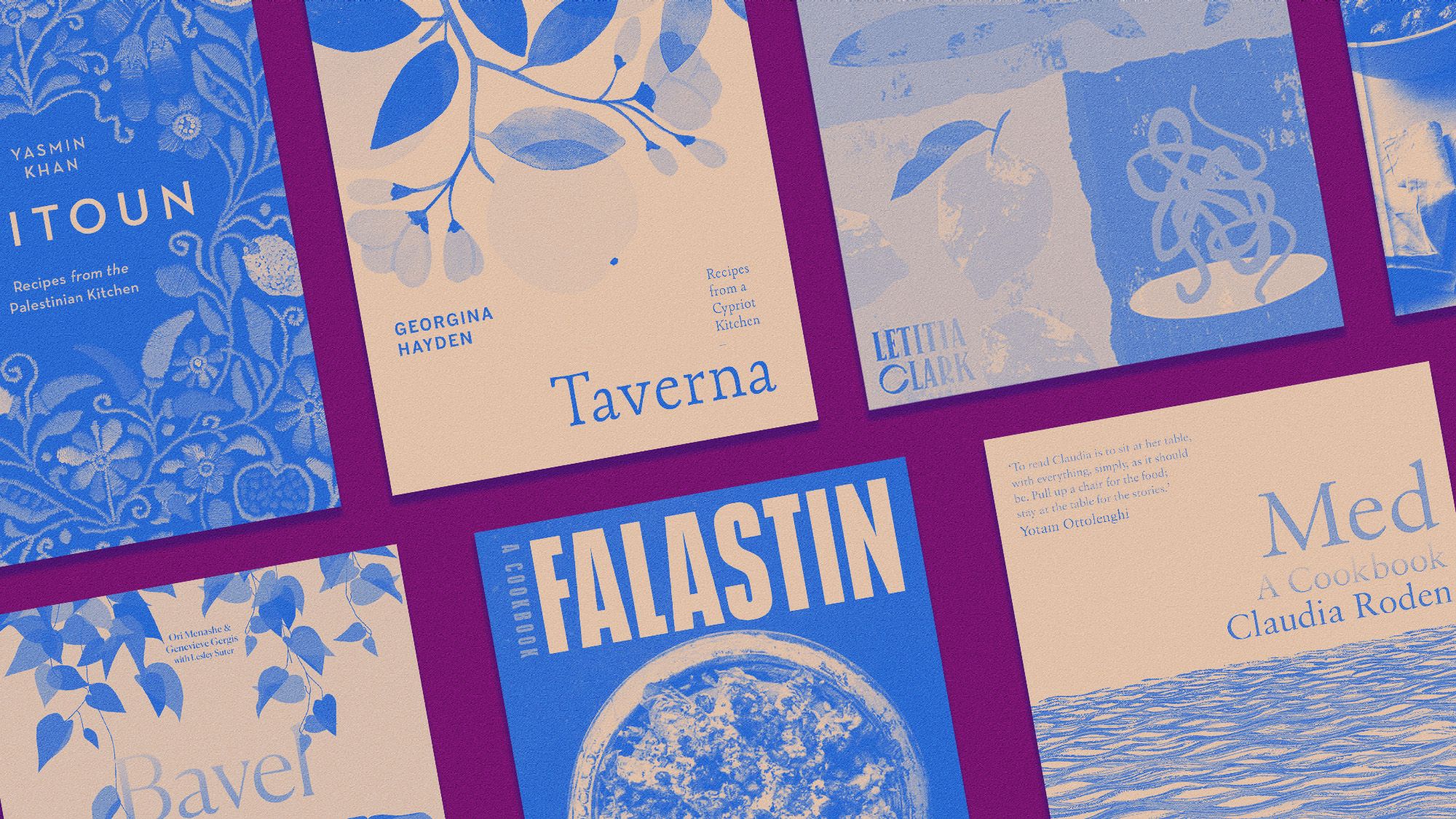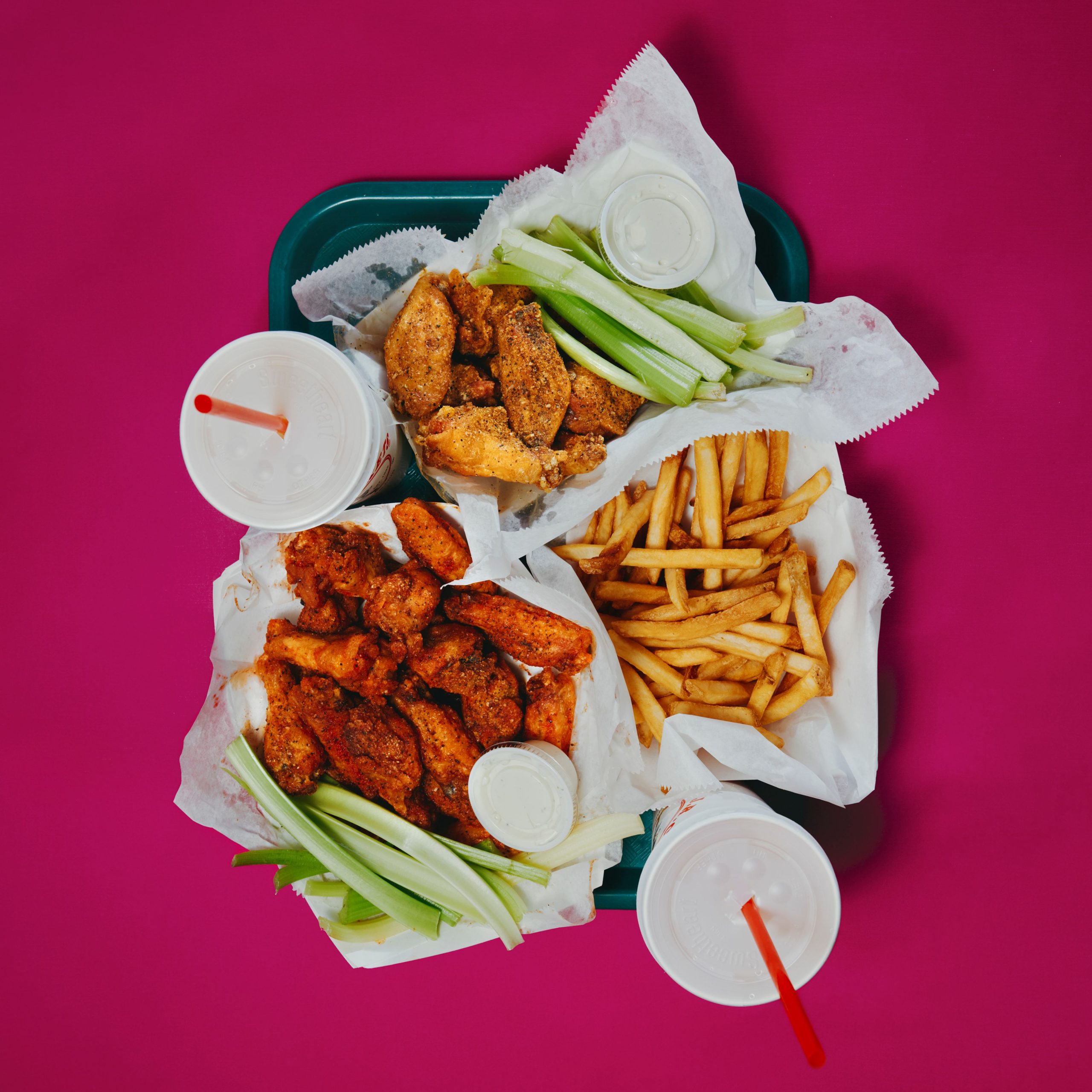Now Reading: Best Mediterranean Cookbooks Fresh, Vibrant Dining (2025)
-
01
Best Mediterranean Cookbooks Fresh, Vibrant Dining (2025)
Best Mediterranean Cookbooks Fresh, Vibrant Dining (2025)

All products featured on Bon Appétit are independently selected by our editors. However, we may receive compensation from retailers and/or from purchases of products through these links.
Mediterranean cooking is rich with romantic associations. Fresh vegetables just picked from the garden, dappled sunlight filtering through an open kitchen window, a bowl of lemons, linens absolutely everywhere—it’s a vision of health and good living that’s undeniably aspirational.
But to say that there is one, particular way of eating endemic to the Mediterranean is reductive. This area of the world constitutes a wide swath of cultures and regions with varied and nuanced cuisines. So in our attempt to round up our favorite Mediterranean cookbooks, we kept our definition pretty loose. Basically, if the food is from a region that touches the Mediterranean sea, it’s Mediterranean.
Below you’ll find a list of truly exceptional cookbooks, compiled from recs made by members of the BA staff and cookbook authors, including Yasmin Khan, Georgina Hayden, and Sheela Prakash—all of whom have written spectacular “Mediterranean” cookbooks themselves.
-
A Mediterranean Feast by Clifford A. Wright”,”dek”:[“div”,[“p”,”Clifford A. Wright’s expansive “,[“em”,”A Mediterranean Feast”],”—which includes more than 500 recipes, 14 original maps, a pantry guide, and a pronunciation key—is as much a history book as it is a cookbook. It covers political and religious intrigue, trade routes and migration paths, peasant kitchens and royal dining rooms. It’s a tome that grounds recipes in their foodways, exploring both the shared and unique elements of each of the many Mediterranean cuisines.”],[“p”,”The book is certain to be cherished by a cookbook lover or culinary history nerd, but Wright’s recipes are unquestionably contemporary and cookable. He took great pains in testing the recipes—spending over 10 years writing this book—and his ingredient guides are an invaluable resource. —”,[“em”,”Kelsey Youngman, senior service editor”]]],”functionalTags”:[],”id”:”6812857cf23bd25d0299f03d”,”isHedClickable”:true,”isPromotion”:null,”name”:”A Mediterranean Feast: The Story of the Birth of the Celebrated Cuisines of the Mediterranean from the Merchants of Venice to the Barbary Corsairs, with More than 500 Recipes by Clifford A. Wright”,”offers”:[{“offerUrl”:”https://www.amazon.com/Mediterranean-Feast-Celebrated-Cuisines-Merchants/dp/0688153054#averageCustomerReviewsAnchor”,”price”:”$40″,”currency”:”USD”,”purchaseUri”:”https://cna.st/p/EbxtFkHZLuQbYaVDMyYw6jtGEezhe8ToYjHE3u7k9Vcs1kFFRnU5aFKEMCqCukUUwh6qCxkJxwrxbm6ADRiFAxWU3KdU1N1KKZCRxyf5dYw9uH8j7AxxnuXwxJvTZZUT9AjhX9mLKH4oAsPhLTuuLadhf8oXG1atJqKgQ6gidegCpaFF92EjUQxViuucxgPd58sa39ikxk3wKz4r5q2McvMWYgWRdvxj7xfi1Ay8su6CXkXYaUG8poaqLaeNBppUvwmpLGdFSBJSt45fNTAnwEuJxMxeG3tHWVhQrtF1CzuS1jg5hFavcVsh2iUBKdsPedD2M1PJmDn9hBxKhuNW”,”reducedPrice”:”$17″,”sellerName”:”Amazon”,”countryCode”:”US”}],”promotionHed”:null,”promotionText”:null,”socialIconsProps”:{“links”:[]},”itemSocialSharesProps”:{“showBookmark”:false,”links”:[{“network”:”facebook”,”behavior”:”popup”,”url”:”https://www.facebook.com/dialog/feed?&display=popup&caption=17MediterraneanCookbooksforaSummerofFresh%2CVibrantDining&app_id=2309869772&link=https%3A%2F%2Fwww.bonappetit.com%2Fgallery%2Fbest-mediterranean-cookbooks%3Fimage%3D6812857cf23bd25d0299f03d%26utm_source%3Dfacebook%26utm_medium%3Dsocial%26utm_campaign%3Donsite-share%26utm_brand%3Dbon-appetit%26utm_social-type%3Dearned”,”label”:”Share on Facebook”},{“network”:”twitter”,”url”:”https://twitter.com/intent/tweet/?url=https%3A%2F%2Fwww.bonappetit.com%2Fgallery%2Fbest-mediterranean-cookbooks%3Fimage%3D6812857cf23bd25d0299f03d%26utm_source%3Dtwitter%26utm_medium%3Dsocial%26utm_campaign%3Donsite-share%26utm_brand%3Dbon-appetit%26utm_social-type%3Dearned&text=17MediterraneanCookbooksforaSummerofFresh%2CVibrantDining&via=bonappetit”,”label”:”Share on X”},{“network”:”pinterest”,”url”:”https://www.pinterest.com/pin/create/button/?url=https%3A%2F%2Fwww.bonappetit.com%2Fgallery%2Fbest-mediterranean-cookbooks%3Fimage%3D6812857cf23bd25d0299f03d%26utm_source%3Dpinterest%26utm_medium%3Dsocial%26utm_campaign%3Donsite-share%26utm_brand%3Dbon-appetit%26utm_social-type%3Dearned&media=https://assets.bonappetit.com/photos/6812857cf23bd25d0299f03d/master/pass/BAWebartBestMediterraneanCookbooks2000x1125.jpg”,”label”:”Share on Pinterest”}]},”showLocalisedOffers”:true,”isUpcEnabled”:true,”index”:0,”showClampedProductDescription”:true,”hasReadMoreFeature”:true,”productDescriptionLineLength”:5,”isMobileView”:false,”hasMultipleImageSupport”:true,”showImageCreditText”:false,”showMultipleImageCount”:4,”hasProsConsFeature”:false,”hasRatingFeature”:false,”pros”:[],”cons”:[],”rating”:””,”isPrimeExclusive”:false,”shouldUseAmazonPrimeDayLiveAPIData”:true,”order”:0,”totalCount”:17,”preHeaderOne”:”1/17″,”showOrderedGallery”:false,”hasAffiliateLinkDisabled”:false,”layout”:”ProductEmbed”,”component”:”unified_product_card”,”hasMultipleImage”:false,”componentType”:true,”showProsConsData”:false,”showBadge”:false,”cneIds”:[]}”>
1/17
A Mediterranean Feast by Clifford A. Wright
Clifford A. Wright’s expansive A Mediterranean Feast—which includes more than 500 recipes, 14 original maps, a pantry guide, and a pronunciation key—is as much a history book as it is a cookbook. It covers political and religious intrigue, trade routes and migration paths, peasant kitchens and royal dining rooms. It’s a tome that grounds recipes in their foodways, exploring both the shared and unique elements of each of the many Mediterranean cuisines.
The book is certain to be cherished by a cookbook lover or culinary history nerd, but Wright’s recipes are unquestionably contemporary and cookable. He took great pains in testing the recipes—spending over 10 years writing this book—and his ingredient guides are an invaluable resource. —Kelsey Youngman, Senior Service Editor
-
Mediterra by Ben Tish”,”dek”:[“div”,[“p”,”The thing I love about all Ben’s books is how cookable they are. “,[“em”,”Mediterra”],” is his latest and is one that has barely left my worktop since its release. It focuses on his travels all along the Mediterranean coastline, including northern Africa, the eastern Med, Baltics and the islands. It is extensively researched but not heavy, and the recipes all feel achievable and look enticing. Yes, Ben Tish is a celebrated chef of many years; however, he manages to cross that border of being an established chef AND a fantastic recipe writer. I regularly make his “spiced crab and egg briks,” bringing back colorful memories of travels around Morocco. And his recipe for a saffron and bay custard tart with sticky blackberries is a firm family Sunday favorite. —”,[“em”,”Georgina Hayden, author of”],” Taverna “,[“em”,”and”],” Greek-ish”]],”functionalTags”:[],”id”:”681285e0eebcadf6f4729229″,”isHedClickable”:true,”isPromotion”:null,”name”:”Mediterra by Ben Tish”,”offers”:[{“offerUrl”:”https://www.amazon.com/Mediterra-Recipes-Islands-Shores-Mediterranean/dp/1526661136/ref=sr_1_1″,”price”:”$35″,”currency”:”USD”,”purchaseUri”:”https://cna.st/p/s7txNnToSWBzy3T8Fkr1zwedtgumg6LtqAW8WWyHZL5Nvf7huMjKHPNhp2m6JeFVG4koCZUr5KhpnMjcowKRe4HQKTmggNH249he15mpQiMjE4EpGd7oPrEsFfzDwRJG1fFEHqK73L16yDcv9muXo2WVY9MPXgAfrfqud8JGPPppqsWwgvJdVWYoURWohZYwJyhg8XwAgCUt4pGoVFhXajZMqWwhr8jjtNa8i6pNiQNp79Q9PiKQUYmUvsTGUtGp1YjS8AjMBtQjRWQRa4wGj4zahS8ckUZy683VKQbRbcN2uqnVd8AW4xN”,”reducedPrice”:”$18″,”sellerName”:”Amazon”,”countryCode”:”US”}],”promotionHed”:null,”promotionText”:null,”socialIconsProps”:{“links”:[]},”itemSocialSharesProps”:{“showBookmark”:false,”links”:[{“network”:”facebook”,”behavior”:”popup”,”url”:”https://www.facebook.com/dialog/feed?&display=popup&caption=17MediterraneanCookbooksforaSummerofFresh%2CVibrantDining&app_id=2309869772&link=https%3A%2F%2Fwww.bonappetit.com%2Fgallery%2Fbest-mediterranean-cookbooks%3Fimage%3D681285e0eebcadf6f4729229%26utm_source%3Dfacebook%26utm_medium%3Dsocial%26utm_campaign%3Donsite-share%26utm_brand%3Dbon-appetit%26utm_social-type%3Dearned”,”label”:”Share on Facebook”},{“network”:”twitter”,”url”:”https://twitter.com/intent/tweet/?url=https%3A%2F%2Fwww.bonappetit.com%2Fgallery%2Fbest-mediterranean-cookbooks%3Fimage%3D681285e0eebcadf6f4729229%26utm_source%3Dtwitter%26utm_medium%3Dsocial%26utm_campaign%3Donsite-share%26utm_brand%3Dbon-appetit%26utm_social-type%3Dearned&text=17MediterraneanCookbooksforaSummerofFresh%2CVibrantDining&via=bonappetit”,”label”:”Share on X”},{“network”:”pinterest”,”url”:”https://www.pinterest.com/pin/create/button/?url=https%3A%2F%2Fwww.bonappetit.com%2Fgallery%2Fbest-mediterranean-cookbooks%3Fimage%3D681285e0eebcadf6f4729229%26utm_source%3Dpinterest%26utm_medium%3Dsocial%26utm_campaign%3Donsite-share%26utm_brand%3Dbon-appetit%26utm_social-type%3Dearned&media=https://assets.bonappetit.com/photos/681285e0eebcadf6f4729229/master/pass/BAWebartBestMediterraneanCookbooks2000x1125.jpg”,”label”:”Share on Pinterest”}]},”showLocalisedOffers”:true,”isUpcEnabled”:true,”index”:1,”showClampedProductDescription”:true,”hasReadMoreFeature”:true,”productDescriptionLineLength”:5,”isMobileView”:false,”hasMultipleImageSupport”:true,”showImageCreditText”:false,”showMultipleImageCount”:4,”hasProsConsFeature”:false,”hasRatingFeature”:false,”pros”:[],”cons”:[],”rating”:””,”isPrimeExclusive”:false,”shouldUseAmazonPrimeDayLiveAPIData”:true,”order”:1,”totalCount”:17,”preHeaderOne”:”2/17″,”showOrderedGallery”:false,”hasAffiliateLinkDisabled”:false,”layout”:”ProductEmbed”,”component”:”unified_product_card”,”hasMultipleImage”:false,”componentType”:true,”showProsConsData”:false,”showBadge”:false,”cneIds”:[]}”>
2/17
Mediterra by Ben Tish
The thing I love about all Ben’s books is how cookable they are. Mediterra is his latest and is one that has barely left my worktop since its release. It focuses on his travels all along the Mediterranean coastline, including northern Africa, the eastern Med, Baltics and the islands. It is extensively researched but not heavy, and the recipes all feel achievable and look enticing. Yes, Ben Tish is a celebrated chef of many years; however, he manages to cross that border of being an established chef AND a fantastic recipe writer. I regularly make his “spiced crab and egg briks,” bringing back colorful memories of travels around Morocco. And his recipe for a saffron and bay custard tart with sticky blackberries is a firm family Sunday favorite. —Georgina Hayden, author of Taverna and Greek-ish
-
Simple by Ottolenghi”,”dek”:[“div”,[“p”,”I’ve been a longtime Ottolenghi fan and have relished cooking my way through his earlier books “,[“em”,”Jerusalem”],” and “,[“em”,”Plenty.”],” While those books contain some recipes that I would deem project cooking and require a trip to a specialty foods store, “,[“em”,”Simple,”],” as the title suggests, is geared toward getting dinner on the table in 30 minutes or less with ingredients you have at home (plus a few like pomegranate molasses that Ottolenghi deems staples worth keeping around). There’s recipes like braised eggs with leeks and za’atar, lamb and feta meatballs, and blueberry, almond, and lemon cake. The slow cooked lamb shoulder with mint and cumin allow you to do most of the prep the night before and then just throw it in the oven day of. It’s a book you’ll reach for on weeknights and might just be the reason you keep harissa stocked in your pantry. —”,[“em”,”Kate Kassin, editorial operations manager”]]],”functionalTags”:[],”id”:”6812866bf23bd25d0299f040″,”isHedClickable”:true,”isPromotion”:null,”name”:”Ottolenghi Simple by Yotam Ottolenghi”,”offers”:[{“offerUrl”:”https://www.amazon.com/Ottolenghi-Simple-Cookbook-Yotam/dp/1607749165/ref=sr_1_1″,”price”:”$38″,”currency”:”USD”,”purchaseUri”:”https://cna.st/p/XtSR1GXKWeHoMdvN3NetPZfb54BE2MfRP3q6571SAzSPxdc1cunaVrFnvf2gNv2HSAvE82cHqtrGETUP8MrJfAb1SArJy65cdrKQBnHa4iiMBE4apSVeHa5Am3ePCQobYUVBMRK94kBHykQce8rQEqTiutngKhgy1sSbF3j7ntNKsdpae7hG61n7rK51GpEarAWWA7c5HJKxHkCuq1m67nazHMX27bfDVTmiVQKrtCzZBvZiSEAJWTwnvXpE5p9VFeu8L9PPCCBsJaDbvHjVTmet6NxJrHV7YbLa”,”reducedPrice”:”$19″,”sellerName”:”Amazon”,”countryCode”:”US”}],”promotionHed”:null,”promotionText”:null,”socialIconsProps”:{“links”:[]},”itemSocialSharesProps”:{“showBookmark”:false,”links”:[{“network”:”facebook”,”behavior”:”popup”,”url”:”https://www.facebook.com/dialog/feed?&display=popup&caption=17MediterraneanCookbooksforaSummerofFresh%2CVibrantDining&app_id=2309869772&link=https%3A%2F%2Fwww.bonappetit.com%2Fgallery%2Fbest-mediterranean-cookbooks%3Fimage%3D6812866bf23bd25d0299f040%26utm_source%3Dfacebook%26utm_medium%3Dsocial%26utm_campaign%3Donsite-share%26utm_brand%3Dbon-appetit%26utm_social-type%3Dearned”,”label”:”Share on Facebook”},{“network”:”twitter”,”url”:”https://twitter.com/intent/tweet/?url=https%3A%2F%2Fwww.bonappetit.com%2Fgallery%2Fbest-mediterranean-cookbooks%3Fimage%3D6812866bf23bd25d0299f040%26utm_source%3Dtwitter%26utm_medium%3Dsocial%26utm_campaign%3Donsite-share%26utm_brand%3Dbon-appetit%26utm_social-type%3Dearned&text=17MediterraneanCookbooksforaSummerofFresh%2CVibrantDining&via=bonappetit”,”label”:”Share on X”},{“network”:”pinterest”,”url”:”https://www.pinterest.com/pin/create/button/?url=https%3A%2F%2Fwww.bonappetit.com%2Fgallery%2Fbest-mediterranean-cookbooks%3Fimage%3D6812866bf23bd25d0299f040%26utm_source%3Dpinterest%26utm_medium%3Dsocial%26utm_campaign%3Donsite-share%26utm_brand%3Dbon-appetit%26utm_social-type%3Dearned&media=https://assets.bonappetit.com/photos/6812866bf23bd25d0299f040/master/pass/BAWebartBestMediterraneanCookbooks2000x1125.jpg”,”label”:”Share on Pinterest”}]},”showLocalisedOffers”:true,”isUpcEnabled”:true,”index”:2,”showClampedProductDescription”:true,”hasReadMoreFeature”:true,”productDescriptionLineLength”:5,”isMobileView”:false,”hasMultipleImageSupport”:true,”showImageCreditText”:false,”showMultipleImageCount”:4,”hasProsConsFeature”:false,”hasRatingFeature”:false,”pros”:[],”cons”:[],”rating”:””,”isPrimeExclusive”:false,”shouldUseAmazonPrimeDayLiveAPIData”:true,”order”:2,”totalCount”:17,”preHeaderOne”:”3/17″,”showOrderedGallery”:false,”hasAffiliateLinkDisabled”:false,”layout”:”ProductEmbed”,”component”:”unified_product_card”,”hasMultipleImage”:false,”componentType”:true,”showProsConsData”:false,”showBadge”:false,”cneIds”:[]}”>
I’ve been a longtime Ottolenghi fan and have relished cooking my way through his earlier books Jerusalem and Plenty. While those books contain some recipes that I would deem project cooking and require a trip to a specialty foods store, Simple, as the title suggests, is geared toward getting dinner on the table in 30 minutes or less with ingredients you have at home (plus a few like pomegranate molasses that Ottolenghi deems staples worth keeping around). There’s recipes like braised eggs with leeks and za’atar, lamb and feta meatballs, and blueberry, almond, and lemon cake. The slow cooked lamb shoulder with mint and cumin allow you to do most of the prep the night before and then just throw it in the oven day of. It’s a book you’ll reach for on weeknights and might just be the reason you keep harissa stocked in your pantry. —Kate Kassin, editorial operations manager
-
Med by Claudia Roden”,”dek”:[“div”,[“p”,”One could argue that every single one of Claudia Roden’s cookbooks should be on this list. Roden has made a career exploring the culinary contours of cuisines surrounding the Mediterranean for over 50 years, publishing over a dozen cookbooks in the process.”],[“p”,”While she’s known for in-depth tomes—her award winning “,[“em”,”The Book of Jewish Food”],” and “,[“em”,”The Food of Spain”],” both max out at over 600 pages—I really enjoy the more personal, relaxed approach she takes with her 2021 release “,[“em”,”Med.”],” Its recipes mix inspirations from every place she’s visited and researched, but are presented with a more casual, “this is just how I like to make it” vibe. The Chicken with Grapes is my go-to date night dish, and the Green Barley Risotto with Peas and Asparagus is the first recipe I’ll be making with my spring farmers market haul. —”,[“em”,”Wilder Davies, commerce writer”]]],”functionalTags”:[],”id”:”681286a0f23bd25d0299f041″,”isHedClickable”:true,”isPromotion”:null,”name”:”Med by Claudia Roden”,”offers”:[{“offerUrl”:”https://www.amazon.com/Med/dp/1529108586/ref=sr_1_1″,”price”:”$44″,”currency”:”USD”,”purchaseUri”:”https://cna.st/p/3f9WuwYQpUGdLkTHzLkRDpZJhjg2AjYtvHoMc87aY3TQYPUVfCunuX525ZsMb2gkAhxCBhJ5WKdbHsRizocpYCg9HJ7MwDhLfP2ygSsuN24iHVimixv6qcoAh7ukXcWDKjJ1obrXfyLyNrxQ2hPqcsWadb86aLM8F57r8ipE5m7D63kG3oFQ3H5AeMM5QMd3E55NW6cFbzbiKB36fAHZJrSXhi411CiSUxYKj3wBFrh3PTbEur5bqtzMyvtYv”,”sellerName”:”Amazon”,”countryCode”:”US”,”reducedPrice”:””}],”promotionHed”:null,”promotionText”:null,”socialIconsProps”:{“links”:[]},”itemSocialSharesProps”:{“showBookmark”:false,”links”:[{“network”:”facebook”,”behavior”:”popup”,”url”:”https://www.facebook.com/dialog/feed?&display=popup&caption=17MediterraneanCookbooksforaSummerofFresh%2CVibrantDining&app_id=2309869772&link=https%3A%2F%2Fwww.bonappetit.com%2Fgallery%2Fbest-mediterranean-cookbooks%3Fimage%3D681286a0f23bd25d0299f041%26utm_source%3Dfacebook%26utm_medium%3Dsocial%26utm_campaign%3Donsite-share%26utm_brand%3Dbon-appetit%26utm_social-type%3Dearned”,”label”:”Share on Facebook”},{“network”:”twitter”,”url”:”https://twitter.com/intent/tweet/?url=https%3A%2F%2Fwww.bonappetit.com%2Fgallery%2Fbest-mediterranean-cookbooks%3Fimage%3D681286a0f23bd25d0299f041%26utm_source%3Dtwitter%26utm_medium%3Dsocial%26utm_campaign%3Donsite-share%26utm_brand%3Dbon-appetit%26utm_social-type%3Dearned&text=17MediterraneanCookbooksforaSummerofFresh%2CVibrantDining&via=bonappetit”,”label”:”Share on X”},{“network”:”pinterest”,”url”:”https://www.pinterest.com/pin/create/button/?url=https%3A%2F%2Fwww.bonappetit.com%2Fgallery%2Fbest-mediterranean-cookbooks%3Fimage%3D681286a0f23bd25d0299f041%26utm_source%3Dpinterest%26utm_medium%3Dsocial%26utm_campaign%3Donsite-share%26utm_brand%3Dbon-appetit%26utm_social-type%3Dearned&media=https://assets.bonappetit.com/photos/681286a0f23bd25d0299f041/master/pass/BAWebartBestMediterraneanCookbooks2000x1125.jpg”,”label”:”Share on Pinterest”}]},”showLocalisedOffers”:true,”isUpcEnabled”:true,”index”:3,”showClampedProductDescription”:true,”hasReadMoreFeature”:true,”productDescriptionLineLength”:5,”isMobileView”:false,”hasMultipleImageSupport”:true,”showImageCreditText”:false,”showMultipleImageCount”:4,”hasProsConsFeature”:false,”hasRatingFeature”:false,”pros”:[],”cons”:[],”rating”:””,”isPrimeExclusive”:false,”shouldUseAmazonPrimeDayLiveAPIData”:true,”order”:3,”totalCount”:17,”preHeaderOne”:”4/17″,”showOrderedGallery”:false,”hasAffiliateLinkDisabled”:false,”layout”:”ProductEmbed”,”component”:”unified_product_card”,”hasMultipleImage”:false,”componentType”:true,”showProsConsData”:false,”showBadge”:false,”cneIds”:[]}”>
One could argue that every single one of Claudia Roden’s cookbooks should be on this list. Roden has made a career exploring the culinary contours of cuisines surrounding the Mediterranean for over 50 years, publishing over a dozen cookbooks in the process.
While she’s known for in-depth tomes—her award winning The Book of Jewish Food and The Food of Spain both max out at over 600 pages—I really enjoy the more personal, relaxed approach she takes with her 2021 release With. Its recipes mix inspirations from every place she’s visited and researched, but are presented with a more casual, “this is just how I like to make it” vibe. The Chicken with Grapes is my go-to date night dish, and the Green Barley Risotto with Peas and Asparagus is the first recipe I’ll be making with my spring farmers market haul. —Wilder Davies, commerce writer
-
Zaitoun by Yasmin Khan”,”dek”:[“div”,[“p”,”I’ve always been enamored with the way Yasmin Khan writes books. Dedicated to painting reverent and honest portraits of cultural cuisines, she travels extensively in the region she’s focused on. She spends time with restaurant chefs and in the homes of many people who just love food, and translates their perspectives, techniques, and instincts into replicable recipes. In “,[“em”,”Zaitoun,”],” Kahn brings this effort to Palestine, a place she first visited in the early aughts while working for a British human rights charity. She shares recipes for vibrant food prepared with a focus on freshness and simplicity alongside stories of her travels.”],[“p”,”I now add figs to olive tapenade because of this book; I’ve flipped the upside-down rice with eggplants over for more than a few parties; and I’ve made myself the lamb kibbeh for my own birthday dinner. This book is as useful a tool for weeknight cooking as it is a primer on the region—and the resilient, generous people who live there. —”,[“em”,”Kendra Vaculin, test kitchen editor”]]],”functionalTags”:[],”id”:”681286e8eebcadf6f4729232″,”isHedClickable”:true,”isPromotion”:null,”name”:”Zaitoun by Yasmin Khan”,”offers”:[{“offerUrl”:”https://www.amazon.com/Zaitoun-Recipes-Palestinian-Yasmin-Khan/dp/132400262X/ref=tmm_hrd_swatch_0″,”price”:”$30″,”currency”:”USD”,”purchaseUri”:”https://cna.st/p/2HJc3Q4E4T5trcCT9JomVpYDC7ESYAWmbTrRBrx3g2Whnqy9eYvRw9oXcxjYPoqbY1h6myiorESoKo9Dy92c6o5mwZKVd4Zcy1nadeVs7xir82bUVRxGxU7UsvLnzMZwJSWpNK3m6YX5uNYtb1zmHKGBUQANRGCn2eBBpjPnuUi4gQ5PZNKS3fRmzdAZ4HuZmwVCmcvzMvCTbvz5ZrxxoacC5s1ijFNrvHdkHu6WkAqDLuL8goZWgnVz6VYUHsADokPFBisdq92mqsNts3vR4GcTZRpLAcc4J7xFaEVK9AL5r8oPVFE18PAGeUQN”,”reducedPrice”:”$22″,”sellerName”:”Amazon”,”countryCode”:”US”}],”promotionHed”:null,”promotionText”:null,”socialIconsProps”:{“links”:[]},”itemSocialSharesProps”:{“showBookmark”:false,”links”:[{“network”:”facebook”,”behavior”:”popup”,”url”:”https://www.facebook.com/dialog/feed?&display=popup&caption=17MediterraneanCookbooksforaSummerofFresh%2CVibrantDining&app_id=2309869772&link=https%3A%2F%2Fwww.bonappetit.com%2Fgallery%2Fbest-mediterranean-cookbooks%3Fimage%3D681286e8eebcadf6f4729232%26utm_source%3Dfacebook%26utm_medium%3Dsocial%26utm_campaign%3Donsite-share%26utm_brand%3Dbon-appetit%26utm_social-type%3Dearned”,”label”:”Share on Facebook”},{“network”:”twitter”,”url”:”https://twitter.com/intent/tweet/?url=https%3A%2F%2Fwww.bonappetit.com%2Fgallery%2Fbest-mediterranean-cookbooks%3Fimage%3D681286e8eebcadf6f4729232%26utm_source%3Dtwitter%26utm_medium%3Dsocial%26utm_campaign%3Donsite-share%26utm_brand%3Dbon-appetit%26utm_social-type%3Dearned&text=17MediterraneanCookbooksforaSummerofFresh%2CVibrantDining&via=bonappetit”,”label”:”Share on X”},{“network”:”pinterest”,”url”:”https://www.pinterest.com/pin/create/button/?url=https%3A%2F%2Fwww.bonappetit.com%2Fgallery%2Fbest-mediterranean-cookbooks%3Fimage%3D681286e8eebcadf6f4729232%26utm_source%3Dpinterest%26utm_medium%3Dsocial%26utm_campaign%3Donsite-share%26utm_brand%3Dbon-appetit%26utm_social-type%3Dearned&media=https://assets.bonappetit.com/photos/681286e8eebcadf6f4729232/master/pass/BAWebartBestMediterraneanCookbooks2000x1125.jpg”,”label”:”Share on Pinterest”}]},”showLocalisedOffers”:true,”isUpcEnabled”:true,”index”:4,”showClampedProductDescription”:true,”hasReadMoreFeature”:true,”productDescriptionLineLength”:5,”isMobileView”:false,”hasMultipleImageSupport”:true,”showImageCreditText”:false,”showMultipleImageCount”:4,”hasProsConsFeature”:false,”hasRatingFeature”:false,”pros”:[],”cons”:[],”rating”:””,”isPrimeExclusive”:false,”shouldUseAmazonPrimeDayLiveAPIData”:true,”order”:4,”totalCount”:17,”preHeaderOne”:”5/17″,”showOrderedGallery”:false,”recirc”:{“include”:true,”reelId”:1},”hasAffiliateLinkDisabled”:false,”layout”:”ProductEmbed”,”component”:”unified_product_card”,”hasMultipleImage”:false,”componentType”:true,”showProsConsData”:false,”showBadge”:false,”cneIds”:[]}”>
5/17
Zaitoun by Yasmin Khan
I’ve always been enamored with the way Yasmin Khan writes books. Dedicated to painting reverent and honest portraits of cultural cuisines, she travels extensively in the region she’s focused on. She spends time with restaurant chefs and in the homes of many people who just love food, and translates their perspectives, techniques, and instincts into replicable recipes. In Zaitoun, Kahn brings this effort to Palestine, a place she first visited in the early aughts while working for a British human rights charity. She shares recipes for vibrant food prepared with a focus on freshness and simplicity alongside stories of her travels.
I now add figs to olive tapenade because of this book; I’ve flipped the upside-down rice with eggplants over for more than a few parties; and I’ve made myself the lamb kibbeh for my own birthday dinner. This book is as useful a tool for weeknight cooking as it is a primer on the region—and the resilient, generous people who live there. —Kendra Vaculin, test kitchen editor
-
Falastin by Sami Tamimi and Tara Wigley”,”dek”:[“div”,[“p”,”This cookbook transports you to the Mediterranean for Palestinian cooking filled with pomegranate, eggplant, and cardamom. The recipes highlight the Arab culture of Jerusalem, filling pages with labneh cheesecake and juicy lamb while telling the stories of cooks in refugee camps and home kitchens in Gaza. —”,[“em”,”Jamila Robinson, editor in chief”]]],”functionalTags”:[],”id”:”679baf84adf14365267a0158″,”isHedClickable”:true,”isPromotion”:null,”name”:”Falastin: A Cookbook”,”offers”:[{“offerUrl”:”https://www.amazon.com/Falastin-Cookbook-Sami-Tamimi/dp/0399581731″,”price”:”$35″,”currency”:”USD”,”purchaseUri”:”https://cna.st/p/L31kjCrBRWwQvKaKppLXnw5qdQnAdw2FGTpzpxEL3fvPzNkcU1TWyeRrojdoW1WG3jz9HHWFtP1nEsRHhXY8yszHeAfbewdFetTuK4nanekQPD3rnXyCvZiZzX3qyoQ3DhpmTtmDDMoVTrgvZdi91PRk3dHgsHXjMR5DnvASG82VzWVz6ph5MycFZHAMHhi5eM655ManUVumRsscnnzyEMch7BRjWxnXDiSYLvj6a8zXiqETL1ewobN4y33xCdzMVis2YsLANVSZfiXYi”,”reducedPrice”:”$19″,”sellerName”:”Amazon”,”countryCode”:”US”}],”promotionHed”:null,”promotionText”:null,”socialIconsProps”:{“links”:[]},”itemSocialSharesProps”:{“showBookmark”:false,”links”:[{“network”:”facebook”,”behavior”:”popup”,”url”:”https://www.facebook.com/dialog/feed?&display=popup&caption=17MediterraneanCookbooksforaSummerofFresh%2CVibrantDining&app_id=2309869772&link=https%3A%2F%2Fwww.bonappetit.com%2Fgallery%2Fbest-mediterranean-cookbooks%3Fimage%3D679baf84adf14365267a0158%26utm_source%3Dfacebook%26utm_medium%3Dsocial%26utm_campaign%3Donsite-share%26utm_brand%3Dbon-appetit%26utm_social-type%3Dearned”,”label”:”Share on Facebook”},{“network”:”twitter”,”url”:”https://twitter.com/intent/tweet/?url=https%3A%2F%2Fwww.bonappetit.com%2Fgallery%2Fbest-mediterranean-cookbooks%3Fimage%3D679baf84adf14365267a0158%26utm_source%3Dtwitter%26utm_medium%3Dsocial%26utm_campaign%3Donsite-share%26utm_brand%3Dbon-appetit%26utm_social-type%3Dearned&text=17MediterraneanCookbooksforaSummerofFresh%2CVibrantDining&via=bonappetit”,”label”:”Share on X”},{“network”:”pinterest”,”url”:”https://www.pinterest.com/pin/create/button/?url=https%3A%2F%2Fwww.bonappetit.com%2Fgallery%2Fbest-mediterranean-cookbooks%3Fimage%3D679baf84adf14365267a0158%26utm_source%3Dpinterest%26utm_medium%3Dsocial%26utm_campaign%3Donsite-share%26utm_brand%3Dbon-appetit%26utm_social-type%3Dearned&media=https://assets.bonappetit.com/photos/679baf84adf14365267a0158/master/pass/BAWebartBestMediterraneanCookbooks2000x1125.jpg”,”label”:”Share on Pinterest”}]},”showLocalisedOffers”:true,”isUpcEnabled”:true,”index”:5,”showClampedProductDescription”:true,”hasReadMoreFeature”:true,”productDescriptionLineLength”:5,”isMobileView”:false,”hasMultipleImageSupport”:true,”showImageCreditText”:false,”showMultipleImageCount”:4,”hasProsConsFeature”:false,”hasRatingFeature”:false,”pros”:[],”cons”:[],”rating”:””,”isPrimeExclusive”:false,”shouldUseAmazonPrimeDayLiveAPIData”:true,”order”:5,”totalCount”:17,”preHeaderOne”:”6/17″,”showOrderedGallery”:false,”hasAffiliateLinkDisabled”:false,”layout”:”ProductEmbed”,”component”:”unified_product_card”,”hasMultipleImage”:false,”componentType”:true,”showProsConsData”:false,”showBadge”:false,”cneIds”:[]}”>
6/17
Palestine by Sami Tamimi and Tara Wigley
This cookbook transports you to the Mediterranean for Palestinian cooking filled with pomegranate, eggplant, and cardamom. The recipes highlight the Arab culture of Jerusalem, filling pages with labneh cheesecake and juicy lamb while telling the stories of cooks in refugee camps and home kitchens in Gaza. —Jamila Robinson, editor in chief
-
Essentials of Classic Italian Cooking by Marcella Hazan”,”dek”:[“div”,[“p”,”Marcella is to Italian cuisine what Julia is to French cuisine, and her cookbook is the best example of just how simple, satisfying, and seasonal Italian food is—something Hazan set out to teach us all well before anyone else was doing it. This book is packed with favorites. Many are well-known (for good reason), like her Bolognese and her tomato sauce with onion and butter, but there are lots of lesser-preached-about hits, like her minestrone alla romagnola. It’s the humblest vegetable soup, but after a very slow simmer (3 hours), the comforting results are truly transportive. —”,[“em”,”Sheela Prakash, author of”],” Salad Seasons “,[“em”,”and”],” Mediterranean Every Day”]],”functionalTags”:[],”id”:”6812872ff23bd25d0299f046″,”isHedClickable”:true,”isPromotion”:null,”name”:”Essentials of Classic Italian Cooking by Marcella Hazan”,”offers”:[{“offerUrl”:”https://www.amazon.com/Essentials-Classic-Italian-Cooking-Anniversary/dp/0593534328/ref=sr_1_1″,”price”:”$42″,”currency”:”USD”,”purchaseUri”:”https://cna.st/p/s7txNnToSWBzy3T8Fkr1zwedtgumg6LtqAW8WWyHZL5Nvf7huMjKHPNhp2m6JeFVG4koCZUr5KhpnMjZLTxYYURCD4AayeuqUXA4cuESGeNfeN2XhUjRNvujzTbQjaGm3QnQjMpxRJkdYCw3AZdpv28xvqntgLb6MpypZdx7LnPqeDKtUBU2KzErnvAjEYvYeFGgh9F6ThGEEjV2feviyz99b6ZqcGi5esApuHLL3fWpuNnhYAw9y8ZLe3eWfCJQuLMTVF6NG8gpuN67o7NZbaSg8mGuALwKRLge9JNZTKfQ2SvSTawNoCr”,”reducedPrice”:”$22″,”sellerName”:”Amazon”,”countryCode”:”US”}],”promotionHed”:null,”promotionText”:null,”socialIconsProps”:{“links”:[]},”itemSocialSharesProps”:{“showBookmark”:false,”links”:[{“network”:”facebook”,”behavior”:”popup”,”url”:”https://www.facebook.com/dialog/feed?&display=popup&caption=17MediterraneanCookbooksforaSummerofFresh%2CVibrantDining&app_id=2309869772&link=https%3A%2F%2Fwww.bonappetit.com%2Fgallery%2Fbest-mediterranean-cookbooks%3Fimage%3D6812872ff23bd25d0299f046%26utm_source%3Dfacebook%26utm_medium%3Dsocial%26utm_campaign%3Donsite-share%26utm_brand%3Dbon-appetit%26utm_social-type%3Dearned”,”label”:”Share on Facebook”},{“network”:”twitter”,”url”:”https://twitter.com/intent/tweet/?url=https%3A%2F%2Fwww.bonappetit.com%2Fgallery%2Fbest-mediterranean-cookbooks%3Fimage%3D6812872ff23bd25d0299f046%26utm_source%3Dtwitter%26utm_medium%3Dsocial%26utm_campaign%3Donsite-share%26utm_brand%3Dbon-appetit%26utm_social-type%3Dearned&text=17MediterraneanCookbooksforaSummerofFresh%2CVibrantDining&via=bonappetit”,”label”:”Share on X”},{“network”:”pinterest”,”url”:”https://www.pinterest.com/pin/create/button/?url=https%3A%2F%2Fwww.bonappetit.com%2Fgallery%2Fbest-mediterranean-cookbooks%3Fimage%3D6812872ff23bd25d0299f046%26utm_source%3Dpinterest%26utm_medium%3Dsocial%26utm_campaign%3Donsite-share%26utm_brand%3Dbon-appetit%26utm_social-type%3Dearned&media=https://assets.bonappetit.com/photos/6812872ff23bd25d0299f046/master/pass/BAWebartBestMediterraneanCookbooks2000x1125.jpg”,”label”:”Share on Pinterest”}]},”showLocalisedOffers”:true,”isUpcEnabled”:true,”index”:6,”showClampedProductDescription”:true,”hasReadMoreFeature”:true,”productDescriptionLineLength”:5,”isMobileView”:false,”hasMultipleImageSupport”:true,”showImageCreditText”:false,”showMultipleImageCount”:4,”hasProsConsFeature”:false,”hasRatingFeature”:false,”pros”:[],”cons”:[],”rating”:””,”isPrimeExclusive”:false,”shouldUseAmazonPrimeDayLiveAPIData”:true,”order”:6,”totalCount”:17,”preHeaderOne”:”7/17″,”showOrderedGallery”:false,”hasAffiliateLinkDisabled”:false,”layout”:”ProductEmbed”,”component”:”unified_product_card”,”hasMultipleImage”:false,”componentType”:true,”showProsConsData”:false,”showBadge”:false,”cneIds”:[]}”>
7/17
Essentials of Classic Italian Cooking by Marcella Hazan
Marcella is to Italian cuisine what Julia is to French cuisine, and her cookbook is the best example of just how simple, satisfying, and seasonal Italian food is—something Hazan set out to teach us all well before anyone else was doing it. This book is packed with favorites. Many are well-known (for good reason), like her Bolognese and her tomato sauce with onion and butter, but there are lots of lesser-preached-about hits, like her minestrone alla romagnola. It’s the humblest vegetable soup, but after a very slow simmer (3 hours), the comforting results are truly transportive. —Sheela Prakash, author of Salad Seasons and Mediterranean Every Day
-
Taverna by Georgina Hayden”,”dek”:[“div”,[“p”,”Sunlight spills from the pages of “,[“em”,”Taverna,”],” which features dozens of dishes and drinks that beg to be enjoyed outside, preferably near the ocean and ideally on a hot summer day. This collection of Greek Cypriot recipes is a mixture of Hayden’s own creations, alongside classic preparations passed down to her by her Yiayias. Fresh produce is abundant, as are fish and shellfish, and pretty much everything is well-suited for big family gatherings.”],[“p”,”“Transportive” gets thrown around a lot when describing cookbooks, but “,[“em”,”Taverna”],” really merits that description. —”,[“em”,”W.D.”]]],”functionalTags”:[],”id”:”68128777eebcadf6f4729235″,”isHedClickable”:true,”isPromotion”:null,”name”:”Taverna by Georgina Hayden”,”offers”:[{“offerUrl”:”https://www.amazon.com/Taverna-Georgina-Hayden/dp/0224101641/ref=sr_1_1″,”price”:”$50″,”currency”:”USD”,”purchaseUri”:”https://cna.st/p/AUmSbTSfyktc4yLEYYqPMPRXa8CAXTpqcoFssjuu8zhYKDbE3yYDum5YjXxGWvyc2XtHZEAY7gvPRnqF8dnY99E8T6a7EzUyVktuxtzYwnmrkpWLUdcmpKnDaBPCDLiULbHfXXVggTE3p33egE28VMvrNc875ECRdYvQKEPTgfQopANxotKsi8j29B2reoZRALXpEs89hgaFU71e5Z4MZ9GG8P88ovHa3Smzfg15WNercRPfTvvTnBpF8uVjaBxc5Ti2UJwX6cfbzyDtCEpgbgvJ”,”reducedPrice”:”$35″,”sellerName”:”Amazon”,”countryCode”:”US”}],”promotionHed”:null,”promotionText”:null,”socialIconsProps”:{“links”:[]},”itemSocialSharesProps”:{“showBookmark”:false,”links”:[{“network”:”facebook”,”behavior”:”popup”,”url”:”https://www.facebook.com/dialog/feed?&display=popup&caption=17MediterraneanCookbooksforaSummerofFresh%2CVibrantDining&app_id=2309869772&link=https%3A%2F%2Fwww.bonappetit.com%2Fgallery%2Fbest-mediterranean-cookbooks%3Fimage%3D68128777eebcadf6f4729235%26utm_source%3Dfacebook%26utm_medium%3Dsocial%26utm_campaign%3Donsite-share%26utm_brand%3Dbon-appetit%26utm_social-type%3Dearned”,”label”:”Share on Facebook”},{“network”:”twitter”,”url”:”https://twitter.com/intent/tweet/?url=https%3A%2F%2Fwww.bonappetit.com%2Fgallery%2Fbest-mediterranean-cookbooks%3Fimage%3D68128777eebcadf6f4729235%26utm_source%3Dtwitter%26utm_medium%3Dsocial%26utm_campaign%3Donsite-share%26utm_brand%3Dbon-appetit%26utm_social-type%3Dearned&text=17MediterraneanCookbooksforaSummerofFresh%2CVibrantDining&via=bonappetit”,”label”:”Share on X”},{“network”:”pinterest”,”url”:”https://www.pinterest.com/pin/create/button/?url=https%3A%2F%2Fwww.bonappetit.com%2Fgallery%2Fbest-mediterranean-cookbooks%3Fimage%3D68128777eebcadf6f4729235%26utm_source%3Dpinterest%26utm_medium%3Dsocial%26utm_campaign%3Donsite-share%26utm_brand%3Dbon-appetit%26utm_social-type%3Dearned&media=https://assets.bonappetit.com/photos/68128777eebcadf6f4729235/master/pass/BAWebartBestMediterraneanCookbooks2000x1125.jpg”,”label”:”Share on Pinterest”}]},”showLocalisedOffers”:true,”isUpcEnabled”:true,”index”:7,”showClampedProductDescription”:true,”hasReadMoreFeature”:true,”productDescriptionLineLength”:5,”isMobileView”:false,”hasMultipleImageSupport”:true,”showImageCreditText”:false,”showMultipleImageCount”:4,”hasProsConsFeature”:false,”hasRatingFeature”:false,”pros”:[],”cons”:[],”rating”:””,”isPrimeExclusive”:false,”shouldUseAmazonPrimeDayLiveAPIData”:true,”order”:7,”totalCount”:17,”preHeaderOne”:”8/17″,”showOrderedGallery”:false,”hasAffiliateLinkDisabled”:false,”layout”:”ProductEmbed”,”component”:”unified_product_card”,”hasMultipleImage”:false,”componentType”:true,”showProsConsData”:false,”showBadge”:false,”cneIds”:[]}”>
8/17
Taverna by Georgina Hayden
Sunlight spills from the pages of Taverna, which features dozens of dishes and drinks that beg to be enjoyed outside, preferably near the ocean and ideally on a hot summer day. This collection of Greek Cypriot recipes is a mixture of Hayden’s own creations, alongside classic preparations passed down to her by her Yiayias. Fresh produce is abundant, as are fish and shellfish, and pretty much everything is well-suited for big family gatherings.
“Transportive” gets thrown around a lot when describing cookbooks, but Taverna really merits that description. —W.D.
-
Arabesque by Claudia Roden”,”dek”:[“div”,[“p”,[“em”,”Arabesque”],” is a joyous culinary adventure through the kitchens of Morocco, Lebanon, and Turkey from renowned food historian Claudia Roden. I love all of Claudia’s books, but this is my favorite. It’s packed full of recipes that transport you to the bustling markets of Marrakech, the shores of Lebanon, or the mountains of Turkey. Most importantly, the recipes are also easy to make and a perfect introduction to the flavors and techniques of Mediterranean cookery. —”,[“em”,”Yasmin Khan, author of”],” Ripe Figs “,[“em”,”and”],” Zaitoun”]],”functionalTags”:[],”id”:”681287b3443e853c07b98759″,”isHedClickable”:true,”isPromotion”:null,”name”:”Arabesque: A Taste of Morocco, Turkey, and Lebanon: A Cookbook by Claudia Roden”,”offers”:[{“offerUrl”:”https://www.amazon.com/Arabesque-Taste-Morocco-Turkey-Lebanon/dp/030726498X/ref=sr_1_1″,”price”:”$45″,”currency”:”USD”,”purchaseUri”:”https://cna.st/p/2AtUUZ8dMcfSdMeGmz1jGLgRkc6KXWMSGgdJr8656ctkdZgCMoCZhCwSTc9V2A7UQHd8LE8LbAzVoAUwyLJ3fLQnrXGw36QRU4z7z6pe7CntJ6XP3sTXUHuPGrDzsMxNwFfEFuDNnyGX9syvaLmsF6dWcuTMYq2xPkyBPZWhhEr97TmdEZ7WpeW9ieGBKqC18P5B2LD5JSxdz9G4DB1CzoQbGuQyKENUkafdwrWQknWr2jtHEzEi9mLE2XcQTXyouHRdrFUxvAmvUGESqMiXbGA47HSAfvXwCfFXbfKB68iC6″,”reducedPrice”:”$29″,”sellerName”:”Amazon”,”countryCode”:”US”}],”promotionHed”:null,”promotionText”:null,”socialIconsProps”:{“links”:[]},”itemSocialSharesProps”:{“showBookmark”:false,”links”:[{“network”:”facebook”,”behavior”:”popup”,”url”:”https://www.facebook.com/dialog/feed?&display=popup&caption=17MediterraneanCookbooksforaSummerofFresh%2CVibrantDining&app_id=2309869772&link=https%3A%2F%2Fwww.bonappetit.com%2Fgallery%2Fbest-mediterranean-cookbooks%3Fimage%3D681287b3443e853c07b98759%26utm_source%3Dfacebook%26utm_medium%3Dsocial%26utm_campaign%3Donsite-share%26utm_brand%3Dbon-appetit%26utm_social-type%3Dearned”,”label”:”Share on Facebook”},{“network”:”twitter”,”url”:”https://twitter.com/intent/tweet/?url=https%3A%2F%2Fwww.bonappetit.com%2Fgallery%2Fbest-mediterranean-cookbooks%3Fimage%3D681287b3443e853c07b98759%26utm_source%3Dtwitter%26utm_medium%3Dsocial%26utm_campaign%3Donsite-share%26utm_brand%3Dbon-appetit%26utm_social-type%3Dearned&text=17MediterraneanCookbooksforaSummerofFresh%2CVibrantDining&via=bonappetit”,”label”:”Share on X”},{“network”:”pinterest”,”url”:”https://www.pinterest.com/pin/create/button/?url=https%3A%2F%2Fwww.bonappetit.com%2Fgallery%2Fbest-mediterranean-cookbooks%3Fimage%3D681287b3443e853c07b98759%26utm_source%3Dpinterest%26utm_medium%3Dsocial%26utm_campaign%3Donsite-share%26utm_brand%3Dbon-appetit%26utm_social-type%3Dearned&media=https://assets.bonappetit.com/photos/681287b3443e853c07b98759/master/pass/BAWebartBestMediterraneanCookbooks2000x1125.jpg”,”label”:”Share on Pinterest”}]},”showLocalisedOffers”:true,”isUpcEnabled”:true,”index”:8,”showClampedProductDescription”:true,”hasReadMoreFeature”:true,”productDescriptionLineLength”:5,”isMobileView”:false,”hasMultipleImageSupport”:true,”showImageCreditText”:false,”showMultipleImageCount”:4,”hasProsConsFeature”:false,”hasRatingFeature”:false,”pros”:[],”cons”:[],”rating”:””,”isPrimeExclusive”:false,”shouldUseAmazonPrimeDayLiveAPIData”:true,”order”:8,”totalCount”:17,”preHeaderOne”:”9/17″,”showOrderedGallery”:false,”hasAffiliateLinkDisabled”:false,”layout”:”ProductEmbed”,”component”:”unified_product_card”,”hasMultipleImage”:false,”componentType”:true,”showProsConsData”:false,”showBadge”:false,”cneIds”:[]}”>
9/17
Arabesque by claudia guess
Arabesque is a joyous culinary adventure through the kitchens of Morocco, Lebanon, and Turkey from renowned food historian Claudia Roden. I love all of Claudia’s books, but this is my favorite. It’s packed full of recipes that transport you to the bustling markets of Marrakech, the shores of Lebanon, or the mountains of Turkey. Most importantly, the recipes are also easy to make and a perfect introduction to the flavors and techniques of Mediterranean cookery. —Yasmin Khan, author of Ripe Figs and Zaitoun
-
Zahav by Michael Solomonov and Steven Cook”,”dek”:[“div”,[“p”,”A seminal cookbook by Philadelphia chef and restaurateur Michael Solomonov, “,[“em”,”Zahav”],” redefined Israeli food for the home cook by exploring the entire Levantine peninsula and acknowledging the influences from North Africa, Ethiopia, Greece, and Eastern Europe. —”,[“em”,”J.R.”]]],”functionalTags”:[],”id”:”681287f2443e853c07b9875e”,”isHedClickable”:true,”isPromotion”:null,”name”:”Zahav by Michael Solomonov and Steven Cook”,”offers”:[{“offerUrl”:”https://www.amazon.com/Zahav-Israeli-Cooking-Michael-Solomonov/dp/0544373286/ref=sr_1_1″,”price”:”$40″,”currency”:”USD”,”purchaseUri”:”https://cna.st/p/6AeCGcpfTzQg7U7WdYeDYhs2FTtUmeZCYDuFmpHP5oRRaPE18nv3JThHNS8Sg7DZwnNTMrwPTq6n6krNkpFf5SZLVGRVfHyF9PmTXjrPN7FTcKQcPA8VPJ8o9S7NgFP3JeqMJLSzUEhPtUnvKxxbu2X5Pws9CRrgifq7p27KGYYLUTdrUYRgD8hXb18UYCYsUGm9aTQJ7qwzFSUC4YP4emrSqaRfvwaLpHnSiRG3Gw9NmJH7ai71Dgn79qhkPxbuv1KNUDGvQufLZUjCvNUpXDzNanVYy6EYQi1rNqRZx73oNe”,”reducedPrice”:”$19″,”sellerName”:”Amazon”,”countryCode”:”US”}],”promotionHed”:null,”promotionText”:null,”socialIconsProps”:{“links”:[]},”itemSocialSharesProps”:{“showBookmark”:false,”links”:[{“network”:”facebook”,”behavior”:”popup”,”url”:”https://www.facebook.com/dialog/feed?&display=popup&caption=17MediterraneanCookbooksforaSummerofFresh%2CVibrantDining&app_id=2309869772&link=https%3A%2F%2Fwww.bonappetit.com%2Fgallery%2Fbest-mediterranean-cookbooks%3Fimage%3D681287f2443e853c07b9875e%26utm_source%3Dfacebook%26utm_medium%3Dsocial%26utm_campaign%3Donsite-share%26utm_brand%3Dbon-appetit%26utm_social-type%3Dearned”,”label”:”Share on Facebook”},{“network”:”twitter”,”url”:”https://twitter.com/intent/tweet/?url=https%3A%2F%2Fwww.bonappetit.com%2Fgallery%2Fbest-mediterranean-cookbooks%3Fimage%3D681287f2443e853c07b9875e%26utm_source%3Dtwitter%26utm_medium%3Dsocial%26utm_campaign%3Donsite-share%26utm_brand%3Dbon-appetit%26utm_social-type%3Dearned&text=17MediterraneanCookbooksforaSummerofFresh%2CVibrantDining&via=bonappetit”,”label”:”Share on X”},{“network”:”pinterest”,”url”:”https://www.pinterest.com/pin/create/button/?url=https%3A%2F%2Fwww.bonappetit.com%2Fgallery%2Fbest-mediterranean-cookbooks%3Fimage%3D681287f2443e853c07b9875e%26utm_source%3Dpinterest%26utm_medium%3Dsocial%26utm_campaign%3Donsite-share%26utm_brand%3Dbon-appetit%26utm_social-type%3Dearned&media=https://assets.bonappetit.com/photos/681287f2443e853c07b9875e/master/pass/BAWebartBestMediterraneanCookbooks2000x1125.jpg”,”label”:”Share on Pinterest”}]},”showLocalisedOffers”:true,”isUpcEnabled”:true,”index”:9,”showClampedProductDescription”:true,”hasReadMoreFeature”:true,”productDescriptionLineLength”:5,”isMobileView”:false,”hasMultipleImageSupport”:true,”showImageCreditText”:false,”showMultipleImageCount”:4,”hasProsConsFeature”:false,”hasRatingFeature”:false,”pros”:[],”cons”:[],”rating”:””,”isPrimeExclusive”:false,”shouldUseAmazonPrimeDayLiveAPIData”:true,”order”:9,”totalCount”:17,”preHeaderOne”:”10/17″,”showOrderedGallery”:false,”hasAffiliateLinkDisabled”:false,”layout”:”ProductEmbed”,”component”:”unified_product_card”,”hasMultipleImage”:false,”componentType”:true,”showProsConsData”:false,”showBadge”:false,”cneIds”:[]}”>
10/17
Zahav by Michael Solomonov and Steven Cook
A seminal cookbook by Philadelphia chef and restaurateur Michael Solomonov, Zahav redefined Israeli food for the home cook by exploring the entire Levantine peninsula and acknowledging the influences from North Africa, Ethiopia, Greece, and Eastern Europe. —J.R.
-
Mediterranean Every Day by Sheela Prakash”,”dek”:[“div”,[“p”,”The genius in this cookbook lies in its approachability. It’s rare to find cookbooks where every single recipe feels like something you could integrate into your weeknight rotation. Prakash’s recipes are both straightforward and novel; she’s great at taking ingredients you likely have on hand and showing you something new to do with them. I love making the Spicy Sausage and Rice Soup on chilly evenings, and the Baked Spinach and Artichoke Gnudi blends a classic Tuscan cooking technique (making dumplings out of pasta filling) with the flavors of a beloved American dip (spinach and artichoke) for a meal that’s both easy and delicious. —”,[“em”,”W.D.”]]],”functionalTags”:[],”id”:”6812882ceebcadf6f472923a”,”isHedClickable”:true,”isPromotion”:null,”name”:”Mediterranean Every Day: Simple, Inspired Recipes for Feel-Good Food by Sheela Prakash”,”offers”:[{“offerUrl”:”https://www.amazon.com/Mediterranean-Every-Day-Inspired-Feel-Good/dp/1558329994/ref=sr_1_1″,”price”:”$27″,”currency”:”USD”,”purchaseUri”:”https://cna.st/p/8fESWYnFUrhpjF3TXphwHyLYCKDHhCKzJvsrL4RvxZVMUpaacoU3rKCsxpJAGGCAqGkW83MdLcotHwMad1vY4JwXoDguFGWDd2HKh5y3a9uTpiJqveouXJRWCurQbsDPbFSFyhjuDRhdJck77od3Wj9ukdWPycJNqn2SgNsN4gLK3RcY9JSzvbhXyXWezKVCXkdXF9npBwwBAbe4VVGj5Pn4aUoCnvt2QcQg4jfaVJ8SMJQ3s3vT1Z3HgJCgTxj7BQqAXWGVhZ1SyCJfQ3mWsQ9uS6XqtCwzqVrayM92tFJWzpLr2A”,”reducedPrice”:”$19″,”sellerName”:”Amazon”,”countryCode”:”US”}],”promotionHed”:null,”promotionText”:null,”socialIconsProps”:{“links”:[]},”itemSocialSharesProps”:{“showBookmark”:false,”links”:[{“network”:”facebook”,”behavior”:”popup”,”url”:”https://www.facebook.com/dialog/feed?&display=popup&caption=17MediterraneanCookbooksforaSummerofFresh%2CVibrantDining&app_id=2309869772&link=https%3A%2F%2Fwww.bonappetit.com%2Fgallery%2Fbest-mediterranean-cookbooks%3Fimage%3D6812882ceebcadf6f472923a%26utm_source%3Dfacebook%26utm_medium%3Dsocial%26utm_campaign%3Donsite-share%26utm_brand%3Dbon-appetit%26utm_social-type%3Dearned”,”label”:”Share on Facebook”},{“network”:”twitter”,”url”:”https://twitter.com/intent/tweet/?url=https%3A%2F%2Fwww.bonappetit.com%2Fgallery%2Fbest-mediterranean-cookbooks%3Fimage%3D6812882ceebcadf6f472923a%26utm_source%3Dtwitter%26utm_medium%3Dsocial%26utm_campaign%3Donsite-share%26utm_brand%3Dbon-appetit%26utm_social-type%3Dearned&text=17MediterraneanCookbooksforaSummerofFresh%2CVibrantDining&via=bonappetit”,”label”:”Share on X”},{“network”:”pinterest”,”url”:”https://www.pinterest.com/pin/create/button/?url=https%3A%2F%2Fwww.bonappetit.com%2Fgallery%2Fbest-mediterranean-cookbooks%3Fimage%3D6812882ceebcadf6f472923a%26utm_source%3Dpinterest%26utm_medium%3Dsocial%26utm_campaign%3Donsite-share%26utm_brand%3Dbon-appetit%26utm_social-type%3Dearned&media=https://assets.bonappetit.com/photos/6812882ceebcadf6f472923a/master/pass/BAWebartBestMediterraneanCookbooks2000x1125.jpg”,”label”:”Share on Pinterest”}]},”showLocalisedOffers”:true,”isUpcEnabled”:true,”index”:10,”showClampedProductDescription”:true,”hasReadMoreFeature”:true,”productDescriptionLineLength”:5,”isMobileView”:false,”hasMultipleImageSupport”:true,”showImageCreditText”:false,”showMultipleImageCount”:4,”hasProsConsFeature”:false,”hasRatingFeature”:false,”pros”:[],”cons”:[],”rating”:””,”isPrimeExclusive”:false,”shouldUseAmazonPrimeDayLiveAPIData”:true,”order”:10,”totalCount”:17,”preHeaderOne”:”11/17″,”showOrderedGallery”:false,”hasAffiliateLinkDisabled”:false,”layout”:”ProductEmbed”,”component”:”unified_product_card”,”hasMultipleImage”:false,”componentType”:true,”showProsConsData”:false,”showBadge”:false,”cneIds”:[]}”>
11/17
Mediterranean Every Day by Sheela Prakash
The genius in this cookbook lies in its approachability. It’s rare to find cookbooks where every single recipe feels like something you could integrate into your weeknight rotation. Prakash’s recipes are both straightforward and novel; she’s great at taking ingredients you likely have on hand and showing you something new to do with them. I love making the Spicy Sausage and Rice Soup on chilly evenings, and the Baked Spinach and Artichoke Gnudi blends a classic Tuscan cooking technique (making dumplings out of pasta filling) with the flavors of a beloved American dip (spinach and artichoke) for a meal that’s both easy and delicious. —W.D.
-
The Gaza Kitchen by Laila El-Haddad and Maggie Schmitt”,”dek”:[“div”,[“p”,”An extraordinary cookbook showcasing the unique cuisine and culinary heritage of the people of Gaza. Part social history and part culinary reportage, it introduced me to the bold and fragrant flavors of Gaza, from exquisite combinations of dill, garlic and chiles, to the authors’ love of foraging for wild greens and their special red tahini. —”,[“em”,”Y.K.”]]],”functionalTags”:[],”id”:”68128866f23bd25d0299f04d”,”isHedClickable”:true,”isPromotion”:null,”name”:”The Gaza Kitchen: A Palestinian Culinary Journey by Laila El-Haddad and Maggie Schmitt”,”offers”:[{“offerUrl”:”https://www.amazon.com/Gaza-Kitchen-Palestinian-Culinary-Journey/dp/1682570967/ref=sr_1_1″,”price”:”$30″,”currency”:”USD”,”purchaseUri”:”https://cna.st/p/2jeUyzVq98BcHNJmypxwtspvjthr6UwbjaWCBD76t715e7hgnio1CB1sy9T6Gh9RRz39s5cVAtAGFG2wemcYchTrcjwWcDXk9VUHUDdRzdX1RUwxpiBDtREBwS5nAP1QXutvGg6KBBmYxFGUUB4XPFzkFZYiuwbc1JMGXL5xneJsuFjZZoomVCJ2qwBLbK6rC8dhAq6TnKeKL3GbaRuKhQpaKq51gnaxhXHMcRTp3RFHL3CXcvMsyMHkM1r8HhRC6TAx5m2m886YJNYJ9kVrBTFmmcmfwvRp8P4z7mCTjRCLUBndL”,”reducedPrice”:”$24″,”sellerName”:”Amazon”,”countryCode”:”US”}],”promotionHed”:null,”promotionText”:null,”socialIconsProps”:{“links”:[]},”itemSocialSharesProps”:{“showBookmark”:false,”links”:[{“network”:”facebook”,”behavior”:”popup”,”url”:”https://www.facebook.com/dialog/feed?&display=popup&caption=17MediterraneanCookbooksforaSummerofFresh%2CVibrantDining&app_id=2309869772&link=https%3A%2F%2Fwww.bonappetit.com%2Fgallery%2Fbest-mediterranean-cookbooks%3Fimage%3D68128866f23bd25d0299f04d%26utm_source%3Dfacebook%26utm_medium%3Dsocial%26utm_campaign%3Donsite-share%26utm_brand%3Dbon-appetit%26utm_social-type%3Dearned”,”label”:”Share on Facebook”},{“network”:”twitter”,”url”:”https://twitter.com/intent/tweet/?url=https%3A%2F%2Fwww.bonappetit.com%2Fgallery%2Fbest-mediterranean-cookbooks%3Fimage%3D68128866f23bd25d0299f04d%26utm_source%3Dtwitter%26utm_medium%3Dsocial%26utm_campaign%3Donsite-share%26utm_brand%3Dbon-appetit%26utm_social-type%3Dearned&text=17MediterraneanCookbooksforaSummerofFresh%2CVibrantDining&via=bonappetit”,”label”:”Share on X”},{“network”:”pinterest”,”url”:”https://www.pinterest.com/pin/create/button/?url=https%3A%2F%2Fwww.bonappetit.com%2Fgallery%2Fbest-mediterranean-cookbooks%3Fimage%3D68128866f23bd25d0299f04d%26utm_source%3Dpinterest%26utm_medium%3Dsocial%26utm_campaign%3Donsite-share%26utm_brand%3Dbon-appetit%26utm_social-type%3Dearned&media=https://assets.bonappetit.com/photos/68128866f23bd25d0299f04d/master/pass/BAWebartBestMediterraneanCookbooks2000x1125.jpg”,”label”:”Share on Pinterest”}]},”showLocalisedOffers”:true,”isUpcEnabled”:true,”index”:11,”showClampedProductDescription”:true,”hasReadMoreFeature”:true,”productDescriptionLineLength”:5,”isMobileView”:false,”hasMultipleImageSupport”:true,”showImageCreditText”:false,”showMultipleImageCount”:4,”hasProsConsFeature”:false,”hasRatingFeature”:false,”pros”:[],”cons”:[],”rating”:””,”isPrimeExclusive”:false,”shouldUseAmazonPrimeDayLiveAPIData”:true,”order”:11,”totalCount”:17,”preHeaderOne”:”12/17″,”showOrderedGallery”:false,”hasAffiliateLinkDisabled”:false,”layout”:”ProductEmbed”,”component”:”unified_product_card”,”hasMultipleImage”:false,”componentType”:true,”showProsConsData”:false,”showBadge”:false,”cneIds”:[]}”>
12/17
The Gaza Kitchen by Laila El-Haddad and Maggie Schmitt
An extraordinary cookbook showcasing the unique cuisine and culinary heritage of the people of Gaza. Part social history and part culinary reportage, it introduced me to the bold and fragrant flavors of Gaza, from exquisite combinations of dill, garlic and chiles, to the authors’ love of foraging for wild greens and their special red tahini. —YK
-
Bitter Honey by Letitia Clark”,”dek”:[“div”,[“p”,”In her most recent book, Letitia Clark, along with her Sardinian partner Luca, shares recipes from her home kitchen on the too-often-overlooked Italian island. Featuring a perhaps familiar pantry (there’s no shortage of olive oil, tomatoes, or Pecorino), Clark reveals what sets Sardinia apart from the mainland. Many recipes are traditional regional dishes (some from the coast, the majority inland), like malloreddus, a fresh durum wheat pasta with sausage ragù, generously seasoned with chile, saffron, and bay leaves. Others, mainly the vegetables, feel more touched by Clark’s taste and experiences as a chef. But they all land you squarely in the comforting, welcoming cooking of this little island in the Mediterranean Sea. —”,[“em”,”K.Y.”]]],”functionalTags”:[],”id”:”681288ddf23bd25d0299f052″,”isHedClickable”:true,”isPromotion”:null,”name”:”Bitter Honey: Recipes and Stories from Sardinia, by Letitia Clark”,”offers”:[{“offerUrl”:”https://www.amazon.com/Bitter-Honey-Recipes-Stories-Sardinia/dp/1784882771/ref=zg_bs_g_4286_d_sccl_81/140-9614707-1295847?psc=1″,”price”:”$45″,”currency”:”USD”,”purchaseUri”:”https://cna.st/p/28iSGvNLVT39prExoRAu29qWH7HjvBBKvpK8pzp6G96NZVZAi2J2tak3v8Qk1sxDjGEe47b7vx7Rj245pwYZfKPnt3TQCJgN7FRCTTqX83g9nKhRmeix18eWv8pqAiftyz2ziiVLohNjmbVs6fNNHCbuGSjUZ6QoPRX2pkKST6KjE3jUiUuxvRJbNhpkVpsFr8ak3NBVo6irNrLXwZp2Kn49tRQCxenzqJjPDqGeAAbhEU2wbQq5TUt3xdmiUqn7cLBFmX6RbiPuv4pCSTZns8ax4AHmEmqwwB3gC2DuKXCAzwmGjvgyMFR4XCCQ2k96Hhhyme4k8FwGsVkCtLoa9ZNs92fmqma7KE9Pk”,”reducedPrice”:”$31″,”sellerName”:”Amazon”,”countryCode”:”US”}],”promotionHed”:null,”promotionText”:null,”socialIconsProps”:{“links”:[]},”itemSocialSharesProps”:{“showBookmark”:false,”links”:[{“network”:”facebook”,”behavior”:”popup”,”url”:”https://www.facebook.com/dialog/feed?&display=popup&caption=17MediterraneanCookbooksforaSummerofFresh%2CVibrantDining&app_id=2309869772&link=https%3A%2F%2Fwww.bonappetit.com%2Fgallery%2Fbest-mediterranean-cookbooks%3Fimage%3D681288ddf23bd25d0299f052%26utm_source%3Dfacebook%26utm_medium%3Dsocial%26utm_campaign%3Donsite-share%26utm_brand%3Dbon-appetit%26utm_social-type%3Dearned”,”label”:”Share on Facebook”},{“network”:”twitter”,”url”:”https://twitter.com/intent/tweet/?url=https%3A%2F%2Fwww.bonappetit.com%2Fgallery%2Fbest-mediterranean-cookbooks%3Fimage%3D681288ddf23bd25d0299f052%26utm_source%3Dtwitter%26utm_medium%3Dsocial%26utm_campaign%3Donsite-share%26utm_brand%3Dbon-appetit%26utm_social-type%3Dearned&text=17MediterraneanCookbooksforaSummerofFresh%2CVibrantDining&via=bonappetit”,”label”:”Share on X”},{“network”:”pinterest”,”url”:”https://www.pinterest.com/pin/create/button/?url=https%3A%2F%2Fwww.bonappetit.com%2Fgallery%2Fbest-mediterranean-cookbooks%3Fimage%3D681288ddf23bd25d0299f052%26utm_source%3Dpinterest%26utm_medium%3Dsocial%26utm_campaign%3Donsite-share%26utm_brand%3Dbon-appetit%26utm_social-type%3Dearned&media=https://assets.bonappetit.com/photos/681288ddf23bd25d0299f052/master/pass/BAWebartBestMediterraneanCookbooks2000x1125.jpg”,”label”:”Share on Pinterest”}]},”showLocalisedOffers”:true,”isUpcEnabled”:true,”index”:12,”showClampedProductDescription”:true,”hasReadMoreFeature”:true,”productDescriptionLineLength”:5,”isMobileView”:false,”hasMultipleImageSupport”:true,”showImageCreditText”:false,”showMultipleImageCount”:4,”hasProsConsFeature”:false,”hasRatingFeature”:false,”pros”:[],”cons”:[],”rating”:””,”isPrimeExclusive”:false,”shouldUseAmazonPrimeDayLiveAPIData”:true,”order”:12,”totalCount”:17,”preHeaderOne”:”13/17″,”showOrderedGallery”:false,”recirc”:{“include”:true,”reelId”:2},”hasAffiliateLinkDisabled”:false,”layout”:”ProductEmbed”,”component”:”unified_product_card”,”hasMultipleImage”:false,”componentType”:true,”showProsConsData”:false,”showBadge”:false,”cneIds”:[]}”>
13/17
Bitter Honey by Letitia Clark
In her most recent book, Letitia Clark, along with her Sardinian partner Luca, shares recipes from her home kitchen on the too-often-overlooked Italian island. Featuring a perhaps familiar pantry (there’s no shortage of olive oil, tomatoes, or Pecorino), Clark reveals what sets Sardinia apart from the mainland. Many recipes are traditional regional dishes (some from the coast, the majority inland), like malloreddus, a fresh durum wheat pasta with sausage ragù, generously seasoned with chile, saffron, and bay leaves. Others, mainly the vegetables, feel more touched by Clark’s taste and experiences as a chef. But they all land you squarely in the comforting, welcoming cooking of this little island in the Mediterranean Sea. —Ky
-
Cooking with Italian Grandmothers by Jessica Theroux”,”dek”:[“div”,[“p”,”Despite the term “,[“em”,”Mediterranean”],” being so overarching, I find sense of place to be one of its best character traits. The proud regionality of Italy is one such example and this book shows it off beautifully. Each chapter takes you right into a nonna’s home in a different region—the pages read like a delicious road trip through the country. The panna cotta recipe is wiggly, ultra-creamy perfection, and it’s also inspired by the version from one of my favorite restaurants in the Piedmont town I lived and studied in —”,[“em”,”S.P.”]]],”functionalTags”:[],”id”:”68128aeaeebcadf6f472923f”,”isHedClickable”:true,”isPromotion”:null,”name”:”Cooking with Italian Grandmothers by Jessica Theroux “,”offers”:[{“offerUrl”:”https://www.amazon.com/Cooking-Italian-Grandmothers-Recipes-Stories/dp/1599620898/ref=sr_1_1″,”price”:”$59″,”currency”:”USD”,”purchaseUri”:”https://cna.st/p/3aDLD4v8PzjSv4hfujgKFwuRmRH39NxvAEMRzYvWUXk9A3c3weBpnfaHB4vc4HhwZnnXTNAQhYhHy5SoyeP2iLCmo3uqjJN4kNyTdB18jSEvUTspwqq8iRkrWHCirERe7cysh9yhCDMdkU6ujvAJ2FzowGzaAaq5CFxg15Wakiidn5AzWKZXzYGpt6FekS1dQgHoesBjJsq8LyraKqcUtzT4HFicezt1LtuQH8DNAMwktARzDJoi26uhzin1VoTjVKyBYBfuDxqSXUTBfFiisFd6Tw2ddpskv82UV2k6zqwDRkGPqRkCe”,”sellerName”:”Amazon”,”countryCode”:”US”,”reducedPrice”:””}],”promotionHed”:null,”promotionText”:null,”socialIconsProps”:{“links”:[]},”itemSocialSharesProps”:{“showBookmark”:false,”links”:[{“network”:”facebook”,”behavior”:”popup”,”url”:”https://www.facebook.com/dialog/feed?&display=popup&caption=17MediterraneanCookbooksforaSummerofFresh%2CVibrantDining&app_id=2309869772&link=https%3A%2F%2Fwww.bonappetit.com%2Fgallery%2Fbest-mediterranean-cookbooks%3Fimage%3D68128aeaeebcadf6f472923f%26utm_source%3Dfacebook%26utm_medium%3Dsocial%26utm_campaign%3Donsite-share%26utm_brand%3Dbon-appetit%26utm_social-type%3Dearned”,”label”:”Share on Facebook”},{“network”:”twitter”,”url”:”https://twitter.com/intent/tweet/?url=https%3A%2F%2Fwww.bonappetit.com%2Fgallery%2Fbest-mediterranean-cookbooks%3Fimage%3D68128aeaeebcadf6f472923f%26utm_source%3Dtwitter%26utm_medium%3Dsocial%26utm_campaign%3Donsite-share%26utm_brand%3Dbon-appetit%26utm_social-type%3Dearned&text=17MediterraneanCookbooksforaSummerofFresh%2CVibrantDining&via=bonappetit”,”label”:”Share on X”},{“network”:”pinterest”,”url”:”https://www.pinterest.com/pin/create/button/?url=https%3A%2F%2Fwww.bonappetit.com%2Fgallery%2Fbest-mediterranean-cookbooks%3Fimage%3D68128aeaeebcadf6f472923f%26utm_source%3Dpinterest%26utm_medium%3Dsocial%26utm_campaign%3Donsite-share%26utm_brand%3Dbon-appetit%26utm_social-type%3Dearned&media=https://assets.bonappetit.com/photos/68128aeaeebcadf6f472923f/master/pass/BAWebartBestMediterraneanCookbooks2000x1125.jpg”,”label”:”Share on Pinterest”}]},”showLocalisedOffers”:true,”isUpcEnabled”:true,”index”:13,”showClampedProductDescription”:true,”hasReadMoreFeature”:true,”productDescriptionLineLength”:5,”isMobileView”:false,”hasMultipleImageSupport”:true,”showImageCreditText”:false,”showMultipleImageCount”:4,”hasProsConsFeature”:false,”hasRatingFeature”:false,”pros”:[],”cons”:[],”rating”:””,”isPrimeExclusive”:false,”shouldUseAmazonPrimeDayLiveAPIData”:true,”order”:13,”totalCount”:17,”preHeaderOne”:”14/17″,”showOrderedGallery”:false,”hasAffiliateLinkDisabled”:false,”layout”:”ProductEmbed”,”component”:”unified_product_card”,”hasMultipleImage”:false,”componentType”:true,”showProsConsData”:false,”showBadge”:false,”cneIds”:[]}”>
14/17
Cooking with Italian Grandmothers by Jessica Theroux
Despite the term Mediterranean being so overarching, I find sense of place to be one of its best character traits. The proud regionality of Italy is one such example and this book shows it off beautifully. Each chapter takes you right into a nonna’s home in a different region—the pages read like a delicious road trip through the country. The panna cotta recipe is wiggly, ultra-creamy perfection, and it’s also inspired by the version from one of my favorite restaurants in the Piedmont town I lived and studied in —S.P.
-
Le Sud by Rebekah Peppler”,”dek”:[“div”,[“p”,”For the armchair traveler, Rebekah Peppler’s bright and sunny cookbook focused on the South of France is an ideal companion. The book somehow reads like a holiday. Photographs of sandy beaches and sun-dappled picnic tables under olive trees inspire daydreams, and perhaps a touch of envy. The recipes for food and drink, thank goodness, feel entirely achievable in a home kitchen. Peppler manages to offer both a practical guide to place and a way to (almost) replicate it from afar. Her recipes are personal and informal, like Sandwiches for “Hiking,” or The Pasta I Crave Every Time I’m Near the Sea, while offering clear and uncomplicated instructions. And her chapters on drinking, snacking, and the composition of a perfect cheese plate are filled with her confident expertise. —”,[“em”,”K.Y.”]]],”functionalTags”:[],”id”:”68128b2df23bd25d0299f053″,”isHedClickable”:true,”isPromotion”:null,”name”:”Le Sud: Recipes from Provence-Alpes-Côte d’Azur, by Rebekah Peppler”,”offers”:[{“offerUrl”:”https://www.amazon.com/Sud-Recipes-Provence-Alpes-C%C3%B4te-dAzur/dp/1797219537/ref=asc_df_1797219537″,”price”:”$35″,”currency”:”USD”,”purchaseUri”:”https://cna.st/p/9PDXkxpg5or23aSb2paT3njRQDyXstzU1ovgtbFVSqejHDxzeiRQYjLanUydg65iNUmDrjQcVmWGtZqf3YFoZf2Lw8yKeerxYzY3fUJjyFTu99Siq1uDTNe7s7LK96TspzCRCtm2sU8RHZj44hXUqWEqQbsPuWsnDjeBbkcsqjuT6cUPmdWaaU9GcxmDN3jtjscfusNjrHARGo7AXJkjKgdqbEda8oR685htqhCyNVeM6Yvye7PHh7snWvdFGASP9D8FBH1k2sDmnaPUvvNKrya3uGvqSvgGg9JqfQzPgAhbDAd2DvsZgBQyEEeVPvPBk”,”reducedPrice”:”$24″,”sellerName”:”Amazon”,”countryCode”:”US”}],”promotionHed”:null,”promotionText”:null,”socialIconsProps”:{“links”:[]},”itemSocialSharesProps”:{“showBookmark”:false,”links”:[{“network”:”facebook”,”behavior”:”popup”,”url”:”https://www.facebook.com/dialog/feed?&display=popup&caption=17MediterraneanCookbooksforaSummerofFresh%2CVibrantDining&app_id=2309869772&link=https%3A%2F%2Fwww.bonappetit.com%2Fgallery%2Fbest-mediterranean-cookbooks%3Fimage%3D68128b2df23bd25d0299f053%26utm_source%3Dfacebook%26utm_medium%3Dsocial%26utm_campaign%3Donsite-share%26utm_brand%3Dbon-appetit%26utm_social-type%3Dearned”,”label”:”Share on Facebook”},{“network”:”twitter”,”url”:”https://twitter.com/intent/tweet/?url=https%3A%2F%2Fwww.bonappetit.com%2Fgallery%2Fbest-mediterranean-cookbooks%3Fimage%3D68128b2df23bd25d0299f053%26utm_source%3Dtwitter%26utm_medium%3Dsocial%26utm_campaign%3Donsite-share%26utm_brand%3Dbon-appetit%26utm_social-type%3Dearned&text=17MediterraneanCookbooksforaSummerofFresh%2CVibrantDining&via=bonappetit”,”label”:”Share on X”},{“network”:”pinterest”,”url”:”https://www.pinterest.com/pin/create/button/?url=https%3A%2F%2Fwww.bonappetit.com%2Fgallery%2Fbest-mediterranean-cookbooks%3Fimage%3D68128b2df23bd25d0299f053%26utm_source%3Dpinterest%26utm_medium%3Dsocial%26utm_campaign%3Donsite-share%26utm_brand%3Dbon-appetit%26utm_social-type%3Dearned&media=https://assets.bonappetit.com/photos/68128b2df23bd25d0299f053/master/pass/BAWebartBestMediterraneanCookbooks2000x1125.jpg”,”label”:”Share on Pinterest”}]},”showLocalisedOffers”:true,”isUpcEnabled”:true,”index”:14,”showClampedProductDescription”:true,”hasReadMoreFeature”:true,”productDescriptionLineLength”:5,”isMobileView”:false,”hasMultipleImageSupport”:true,”showImageCreditText”:false,”showMultipleImageCount”:4,”hasProsConsFeature”:false,”hasRatingFeature”:false,”pros”:[],”cons”:[],”rating”:””,”isPrimeExclusive”:false,”shouldUseAmazonPrimeDayLiveAPIData”:true,”order”:14,”totalCount”:17,”preHeaderOne”:”15/17″,”showOrderedGallery”:false,”hasAffiliateLinkDisabled”:false,”layout”:”ProductEmbed”,”component”:”unified_product_card”,”hasMultipleImage”:false,”componentType”:true,”showProsConsData”:false,”showBadge”:false,”cneIds”:[]}”>
15/17
The South by Rebekah Peppler
For the armchair traveler, Rebekah Peppler’s bright and sunny cookbook focused on the South of France is an ideal companion. The book somehow reads like a holiday. Photographs of sandy beaches and sun-dappled picnic tables under olive trees inspire daydreams, and perhaps a touch of envy. The recipes for food and drink, thank goodness, feel entirely achievable in a home kitchen. Peppler manages to offer both a practical guide to place and a way to (almost) replicate it from afar. Her recipes are personal and informal, like Sandwiches for “Hiking,” or The Pasta I Crave Every Time I’m Near the Sea, while offering clear and uncomplicated instructions. And her chapters on drinking, snacking, and the composition of a perfect cheese plate are filled with her confident expertise. —Ky
-
Sababa by Adeena Sussman”,”dek”:[“div”,[“p”,”Adena Sussman’s “,[“em”,”Sababa”],” is a celebration of the vibrant markets of Tel Aviv and the meals she makes from her daily trips to Shuk Hacarmel. While we can’t be alongside her for these morning market strolls, we can experience the market’s sunny flavors (as Sussman herself ascribes) by cooking the recipes in this book.”],[“p”,”There are vegetable-forward dishes like melted green cabbage, tahini-glazed carrots, and root vegetable and Medjool date stew, and dinner-party-worthy mains like sumac grilled chicken and schug-marinated lamb chops. Even for an amateur baker like myself, some of the most intriguing recipes fall in the dessert chapter—because who wouldn’t want chewy tahini blondies or a coffee and cream icebox cake to end the meal? —”,[“em”,”K.K.”]]],”functionalTags”:[],”id”:”68128b69f23bd25d0299f054″,”isHedClickable”:true,”isPromotion”:null,”name”:”Sababa by Adeena Sussman”,”offers”:[{“offerUrl”:”https://www.amazon.com/Sababa-Fresh-Flavors-Israeli-Kitchen/dp/0525533451/ref=sr_1_1″,”price”:”$37″,”currency”:”USD”,”purchaseUri”:”https://cna.st/p/4V7YJyp8h9anWf3tuHLgMT1rFunP9ycnV4i4u7hzJed3X26JvTLwbGkMCjMtTj17qpQEPV55kEaMFKDeZdz3VU25XXG62kbtz3mK9XJ5fJ8BXZZJLgHDs3EodVtBxkHEHnEP5Zto9PbGvxauz4o7qS4vAVsShxuK4UNCRjSP37KvyjxEBsnf99S59PmP37nv341m7r8NXhxsscPdXQ3UYs2KZA377MJNX4PSnNWyoo4t2EBF5pP2BZo8hkXx1uM7xNwbWHAYqCXUjvf8W2CdrfSNTEfzLCuitGAEUjrZ18″,”reducedPrice”:”$19″,”sellerName”:”Amazon”,”countryCode”:”US”}],”promotionHed”:null,”promotionText”:null,”socialIconsProps”:{“links”:[]},”itemSocialSharesProps”:{“showBookmark”:false,”links”:[{“network”:”facebook”,”behavior”:”popup”,”url”:”https://www.facebook.com/dialog/feed?&display=popup&caption=17MediterraneanCookbooksforaSummerofFresh%2CVibrantDining&app_id=2309869772&link=https%3A%2F%2Fwww.bonappetit.com%2Fgallery%2Fbest-mediterranean-cookbooks%3Fimage%3D68128b69f23bd25d0299f054%26utm_source%3Dfacebook%26utm_medium%3Dsocial%26utm_campaign%3Donsite-share%26utm_brand%3Dbon-appetit%26utm_social-type%3Dearned”,”label”:”Share on Facebook”},{“network”:”twitter”,”url”:”https://twitter.com/intent/tweet/?url=https%3A%2F%2Fwww.bonappetit.com%2Fgallery%2Fbest-mediterranean-cookbooks%3Fimage%3D68128b69f23bd25d0299f054%26utm_source%3Dtwitter%26utm_medium%3Dsocial%26utm_campaign%3Donsite-share%26utm_brand%3Dbon-appetit%26utm_social-type%3Dearned&text=17MediterraneanCookbooksforaSummerofFresh%2CVibrantDining&via=bonappetit”,”label”:”Share on X”},{“network”:”pinterest”,”url”:”https://www.pinterest.com/pin/create/button/?url=https%3A%2F%2Fwww.bonappetit.com%2Fgallery%2Fbest-mediterranean-cookbooks%3Fimage%3D68128b69f23bd25d0299f054%26utm_source%3Dpinterest%26utm_medium%3Dsocial%26utm_campaign%3Donsite-share%26utm_brand%3Dbon-appetit%26utm_social-type%3Dearned&media=https://assets.bonappetit.com/photos/68128b69f23bd25d0299f054/master/pass/BAWebartBestMediterraneanCookbooks2000x1125.jpg”,”label”:”Share on Pinterest”}]},”showLocalisedOffers”:true,”isUpcEnabled”:true,”index”:15,”showClampedProductDescription”:true,”hasReadMoreFeature”:true,”productDescriptionLineLength”:5,”isMobileView”:false,”hasMultipleImageSupport”:true,”showImageCreditText”:false,”showMultipleImageCount”:4,”hasProsConsFeature”:false,”hasRatingFeature”:false,”pros”:[],”cons”:[],”rating”:””,”isPrimeExclusive”:false,”shouldUseAmazonPrimeDayLiveAPIData”:true,”order”:15,”totalCount”:17,”preHeaderOne”:”16/17″,”showOrderedGallery”:false,”hasAffiliateLinkDisabled”:false,”layout”:”ProductEmbed”,”component”:”unified_product_card”,”hasMultipleImage”:false,”componentType”:true,”showProsConsData”:false,”showBadge”:false,”cneIds”:[]}”>
16/17
Cause by Adeena Sussman
Adena Sussman’s Cause is a celebration of the vibrant markets of Tel Aviv and the meals she makes from her daily trips to Shuk Hacarmel. While we can’t be alongside her for these morning market strolls, we can experience the market’s sunny flavors (as Sussman herself ascribes) by cooking the recipes in this book.
There are vegetable-forward dishes like melted green cabbage, tahini-glazed carrots, and root vegetable and Medjool date stew, and dinner-party-worthy mains like sumac grilled chicken and schug-marinated lamb chops. Even for an amateur baker like myself, some of the most intriguing recipes fall in the dessert chapter—because who wouldn’t want chewy tahini blondies or a coffee and cream icebox cake to end the meal? —KK
-
Bavel by Ori Menasha and Genevieve Gergis”,”dek”:[“div”,[“p”,”This acclaimed restaurant in Los Angeles is known for its diverse regional cuisine—and is one of my favorites. The recipes are by chefs Ori Menasha and Genevieve Gergis, whose dishes include staples like Lamb Neck Shawarma and a surprising doughnut that calls for rose water and clove. —”,[“em”,”J.R.”]]],”functionalTags”:[],”id”:”68128ba5443e853c07b98767″,”isHedClickable”:true,”isPromotion”:null,”name”:”Bavel, Modern Recipes Inspired by the Middle East by Ori Menasha and Genevieve Gergis”,”offers”:[{“offerUrl”:”https://www.amazon.com/Bavel-Modern-Recipes-Inspired-Cookbook/dp/0399580921/ref=sr_1_1″,”price”:”$40″,”currency”:”USD”,”purchaseUri”:”https://cna.st/p/2AtUUZ8dMcfSdMeGmz1jGLgRkc6KXWMSGgdJr8656ctkdZgCMoCZhCwSTc9V2A7UQHd8LE8LbAzVoAUwytNawv3aEck3TGuUmhix5YkCMTAafUDntCFc4Yx117xNJdotwczFMDCvsqCsHM3aJzuAV1iuTappwhNN2kixfuPjU23Z8kiuAoT6QwTPMTosKLjnkDaBvpNAVX2sz2ViAcmhSiaA9Vykad29sSvx7FCEDy15iMd2KqwPGiinEprPpu8emE6kPuHrfzSFtPupGf9yskD1gkemtjvtKJsghgkLDzCK8″,”reducedPrice”:”$28″,”sellerName”:”Amazon”,”countryCode”:”US”}],”promotionHed”:null,”promotionText”:null,”socialIconsProps”:{“links”:[]},”itemSocialSharesProps”:{“showBookmark”:false,”links”:[{“network”:”facebook”,”behavior”:”popup”,”url”:”https://www.facebook.com/dialog/feed?&display=popup&caption=17MediterraneanCookbooksforaSummerofFresh%2CVibrantDining&app_id=2309869772&link=https%3A%2F%2Fwww.bonappetit.com%2Fgallery%2Fbest-mediterranean-cookbooks%3Fimage%3D68128ba5443e853c07b98767%26utm_source%3Dfacebook%26utm_medium%3Dsocial%26utm_campaign%3Donsite-share%26utm_brand%3Dbon-appetit%26utm_social-type%3Dearned”,”label”:”Share on Facebook”},{“network”:”twitter”,”url”:”https://twitter.com/intent/tweet/?url=https%3A%2F%2Fwww.bonappetit.com%2Fgallery%2Fbest-mediterranean-cookbooks%3Fimage%3D68128ba5443e853c07b98767%26utm_source%3Dtwitter%26utm_medium%3Dsocial%26utm_campaign%3Donsite-share%26utm_brand%3Dbon-appetit%26utm_social-type%3Dearned&text=17MediterraneanCookbooksforaSummerofFresh%2CVibrantDining&via=bonappetit”,”label”:”Share on X”},{“network”:”pinterest”,”url”:”https://www.pinterest.com/pin/create/button/?url=https%3A%2F%2Fwww.bonappetit.com%2Fgallery%2Fbest-mediterranean-cookbooks%3Fimage%3D68128ba5443e853c07b98767%26utm_source%3Dpinterest%26utm_medium%3Dsocial%26utm_campaign%3Donsite-share%26utm_brand%3Dbon-appetit%26utm_social-type%3Dearned&media=https://assets.bonappetit.com/photos/68128ba5443e853c07b98767/master/pass/BAWebartBestMediterraneanCookbooks2000x1125.jpg”,”label”:”Share on Pinterest”}]},”showLocalisedOffers”:true,”isUpcEnabled”:true,”index”:16,”showClampedProductDescription”:true,”hasReadMoreFeature”:true,”productDescriptionLineLength”:5,”isMobileView”:false,”hasMultipleImageSupport”:true,”showImageCreditText”:false,”showMultipleImageCount”:4,”hasProsConsFeature”:false,”hasRatingFeature”:false,”pros”:[],”cons”:[],”rating”:””,”isPrimeExclusive”:false,”shouldUseAmazonPrimeDayLiveAPIData”:true,”order”:16,”totalCount”:17,”preHeaderOne”:”17/17″,”showOrderedGallery”:false,”hasAffiliateLinkDisabled”:false,”layout”:”ProductEmbed”,”component”:”unified_product_card”,”hasMultipleImage”:false,”componentType”:true,”showProsConsData”:false,”showBadge”:false,”cneIds”:[]}”>
17/17
Bavel by Ori Menasha and Genevieve Gergis
This acclaimed restaurant in Los Angeles is known for its diverse regional cuisine—and is one of my favorites. The recipes are by chefs Ori Menasha and Genevieve Gergis, whose dishes include staples like Lamb Neck Shawarma and a surprising doughnut that calls for rose water and clove. —J.R.






